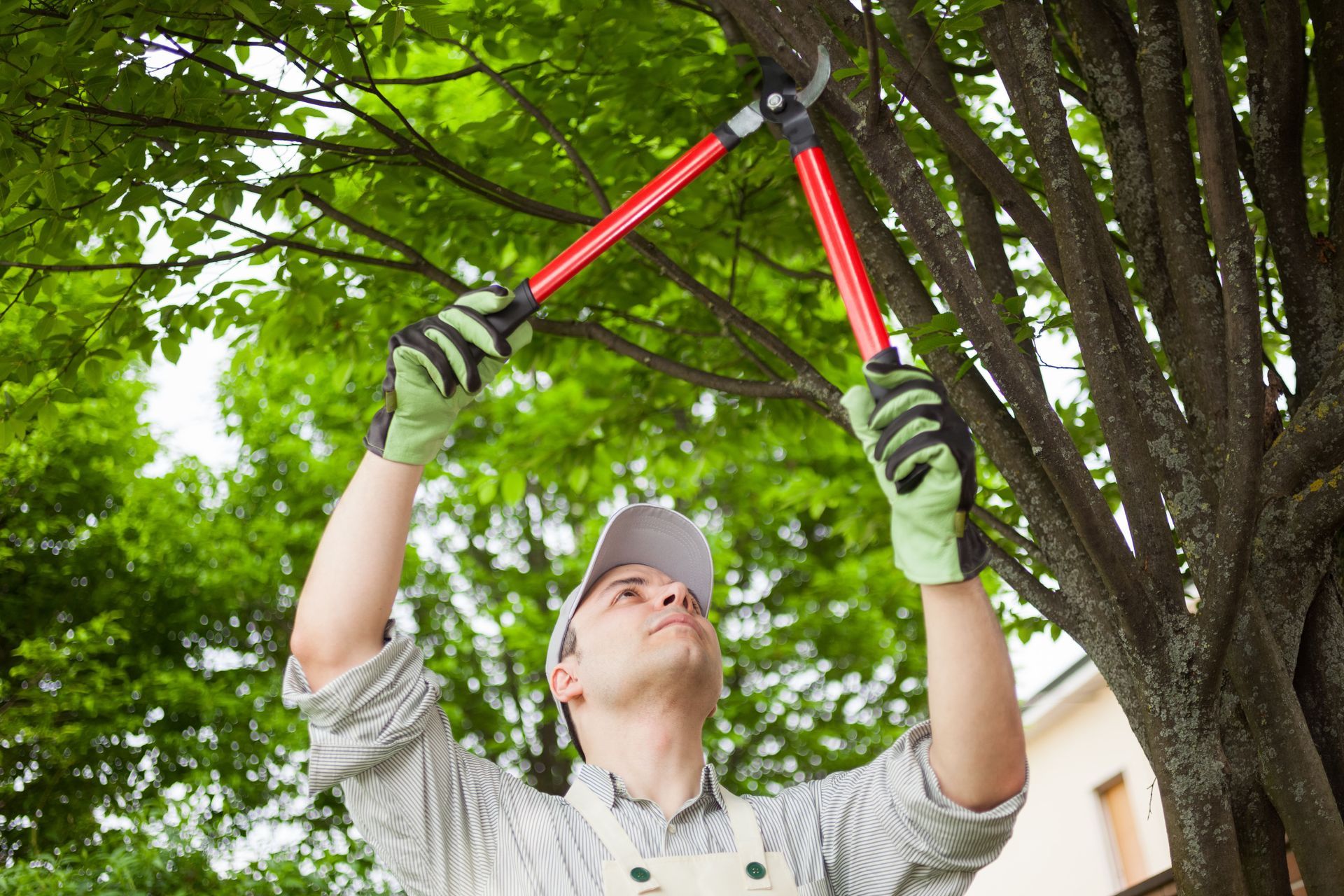4 Surprising Benefits of Professional Tree Removal
In many communities, trees are seen primarily as aesthetic or environmental assets, enhancing property beauty and sustainability. However, professional tree removal, often introduced as a necessity post-storm or for landscaping projects, brings to light a spectrum of benefits beyond just visual upgrade and increasing land safety. According to Forbes, removing trees that are up to 100 feet tall can cost $2,000 or more. This article delves into these unexpected advantages to provide a more nuanced understanding of why professional tree removal might be a worthwhile investment for homeowners and property managers.
While some might question the need to remove trees, the reality is that overgrown, dying, or poorly placed trees can pose significant risks. When managed expertly, tree removal can prevent accidents, protect the environment, and even enhance property value. Therefore, understanding these benefits becomes an imperative step in property maintenance and improvement.
Property owners often focus on immediate improvements and neglect the possible long-term advantages of professional services like tree removal. Beyond the obvious reasons, professional tree removal stands out as a strategic decision encompassing safety, value enhancement, and ecological benefits. In the following sections, each of these advantages will be explored meticulously to offer a comprehensive look at the profound impact of expert tree management.
1. Enhanced Property Safety
Professional tree removal significantly enhances property safety by preventing accidental injuries that can occur from weak or dead branches. Trees with unstable limbs pose a risk to people, vehicles, and structures—especially during adverse weather conditions. By analyzing the structural integrity, professional arborists can identify and mitigate these risks before they become hazardous. Removing such potential threats is a proactive step in ensuring the safety of all occupants and visitors. Moreover, the expertise offered by professionals ensures that even complex removals are conducted safely, minimizing accidental falls and property damage.
Mitigation of fire hazards is another critical safety benefit offered by professional tree removal. Dead or dry trees can act as kindling, rapidly spreading fires throughout a property or neighborhood. Professional removal services not only eliminate these flammable risks but also incorporate strategies to manage ground cover and improve firebreaks. This proactive approach is especially important in areas prone to wildfires. Additionally, having professionals handle this task ensures that the removal process itself does not inadvertently cause a fire due to improper handling.
Protecting a property from storm damage is a compelling reason for timely tree removal. Weak or improperly rooted trees can easily be uprooted in high winds, causing significant damage to homes, cars, and power lines. Professionals are equipped to assess storm damage potential and strategically remove or trim trees to mitigate this threat. Furthermore, pruning practices can strengthen trees against winds, reducing the likelihood of damage. By reducing these risks, property owners not only safeguard their assets but can also find potential savings in avoiding expensive damage repairs and insurance claims.
2. Improved Property Value
Increasing property value begins with elevation of curb appeal—a goal substantially supported by professional tree removal. Overcrowded or unmanaged trees can create a chaotic and unkempt look that detracts from a property's appearance. Professionally removing select trees reveals the property's design and architectural details, enhancing its visual appeal. Alongside tree removal, strategic landscaping can be implemented to highlight desired features like gardens or pathways. The visual impression of a well-maintained property significantly impacts its perceived value on the market.
Professional tree removal also facilitates landscape design efforts by allowing more creativity and flexibility in the planning process. Unwanted or overgrown trees can inhibit the development of new gardens, patios, or outdoor living spaces. Once these obstructions are removed, designers can implement wide-ranging design concepts that include indigenous plants and strategically positioned ornaments. This tailored approach can also cater to personal preferences or the specific needs of potential buyers. Consequently, the removal and subsequent redesign can add substantial market value to the property.
Highlighting existing structures contributes to the attractiveness of the property; this is another undervalued benefit of tree removal. Trees that obscure windows, entryways, or unique architectural features draw attention away from a property's strengths. By removing these obstructions, the property's inherent design speaks for itself, engaging potential buyers more effectively. In connection, the removal often allows for better natural light penetration, which can beautify interiors. Well-lit spaces are a desirable feature, incrementally increasing the property value.
3. Environmental Benefits
Though seemingly counterintuitive, professional tree removal can promote healthy growth for surrounding trees. By strategically removing overcrowded or diseased trees, the remaining flora is afforded more resources such as light, water, and nutrients. This results in stronger, healthier trees that can stand the test of time. Sustainable arborist practices ensure that such interventions are beneficial rather than destructive to the local ecosystem. Ultimately, this thoughtful management supports larger trees' growth and improves the scenery, which contributes to environmental quality and aesthetic enjoyment.
Another environmental advantage is the reduction in soil erosion, which can occur with proper tree removal and management. Trees with extensive root systems can sometimes prevent grass and other ground covers from developing adequately, which is crucial in retaining soil. By removing specific trees, professionals help maintain or enhance the soil structure, reducing erosion risks. This preservation is essential for creating healthy gardens and promoting diverse plant life, encouraging a thriving local ecosystem. The attention to ground-level vegetation also supports water retention and prevents runoff during rain events.
Professional tree removal can also support local wildlife habitats when conducted with ecological considerations in mind. Removing trees doesn't mean eliminating all habitat, but focuses on clearing problematic species while preserving those valuable to native fauna. Habitats can be intentionally designed to support insects, birds, and small mammals. This balanced approach ensures that biodiversity is maintained or even improved post-removal. By fostering living spaces for wildlife, professionals contribute to the environmental value of the area and promote ecological sustainability.
4. Cost Efficiency
A long-term cost efficiency benefit of professional tree removal is the avoidance of future expenses related to potentially hazardous trees. When trees become a threat to structures and people, the costs associated with potential repairs, medical bills, and increased insurance premiums can be significant. Timely removal of trees or branches identified at risk reduces these future financial burdens. Forbes notes that removing large trees, especially those exceeding 100 feet, can cost $2,000 or more, highlighting the importance of proactive action. By investing in professional removal at the right time, property owners can save considerable sums in the long run.
Another cost efficiency aspect is the prevention of infrastructure damage through expert tree removal. Overgrown roots can damage underground utilities, sidewalks, and foundations, while canopy growth might interfere with power lines. These scenarios often lead to expensive repairs. Professionals utilize strategic removal plans that mitigate these risks and preserve the property's structural integrity. By protecting infrastructure today, owners spare themselves costly complications tomorrow, underscoring the value of a preventive rather than reactive approach.
In summary, the benefits of professional tree removal are manifold, extending beyond aesthetics and safety to embrace environmental, economic, and temporal advantages. By preventing potential hazards, improving property value, supporting ecological health, and offering cost-efficient solutions, professional removal creates a net positive impact on property management. Furthermore, these services save time and harness expert knowledge to ensure all work is completed compliantly and efficiently.
Choosing professional tree removal aligns property owners with skilled practitioners who can make informed decisions tailored to specific property and environmental contexts. The assurance of a job well done consolidates the positive outcomes discussed while eliminating the common pitfalls associated with amateur tree removal efforts. Overall, the unexpected advantages of professional tree removal illustrate its role as a prudent investment for both immediate property improvement and long-term environmental stewardship.
As property owners weigh the significance of tree management, this detailed exploration provides valuable insight into the diverse benefits accompanying professional intervention. Ultimately, embracing professional tree removal not only safeguards property and enhances its value but also contributes to a healthier and more sustainable living environment. Recognizing these comprehensive advantages highlights the integral role that tree removal plays in broad property and ecological strategies. Be sure to reach out to Randy Flodeen Four Seasons Tree Service today for more information on our professional tree removal!


Share On: